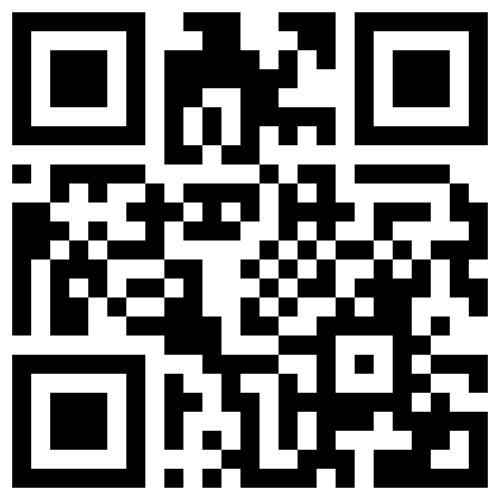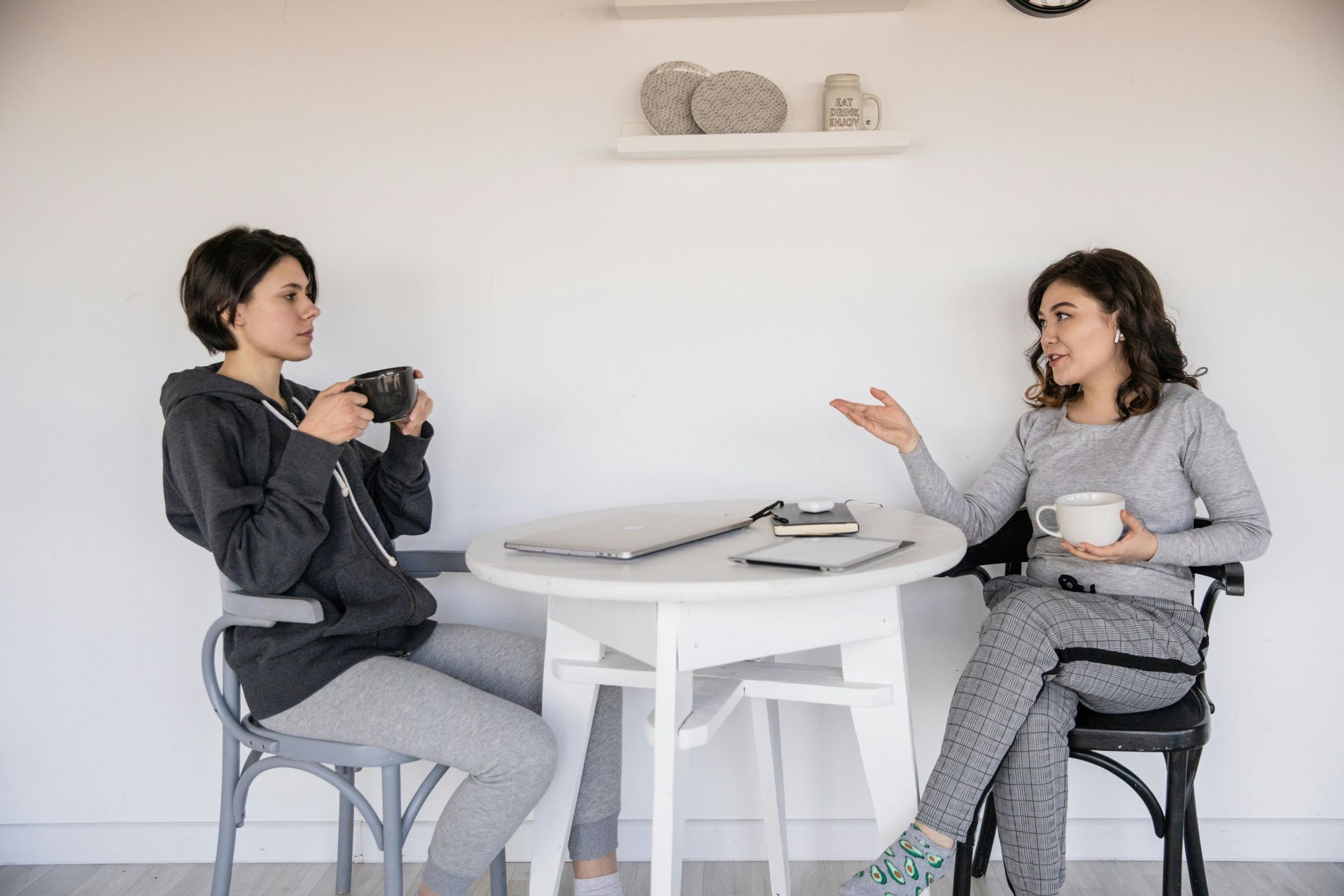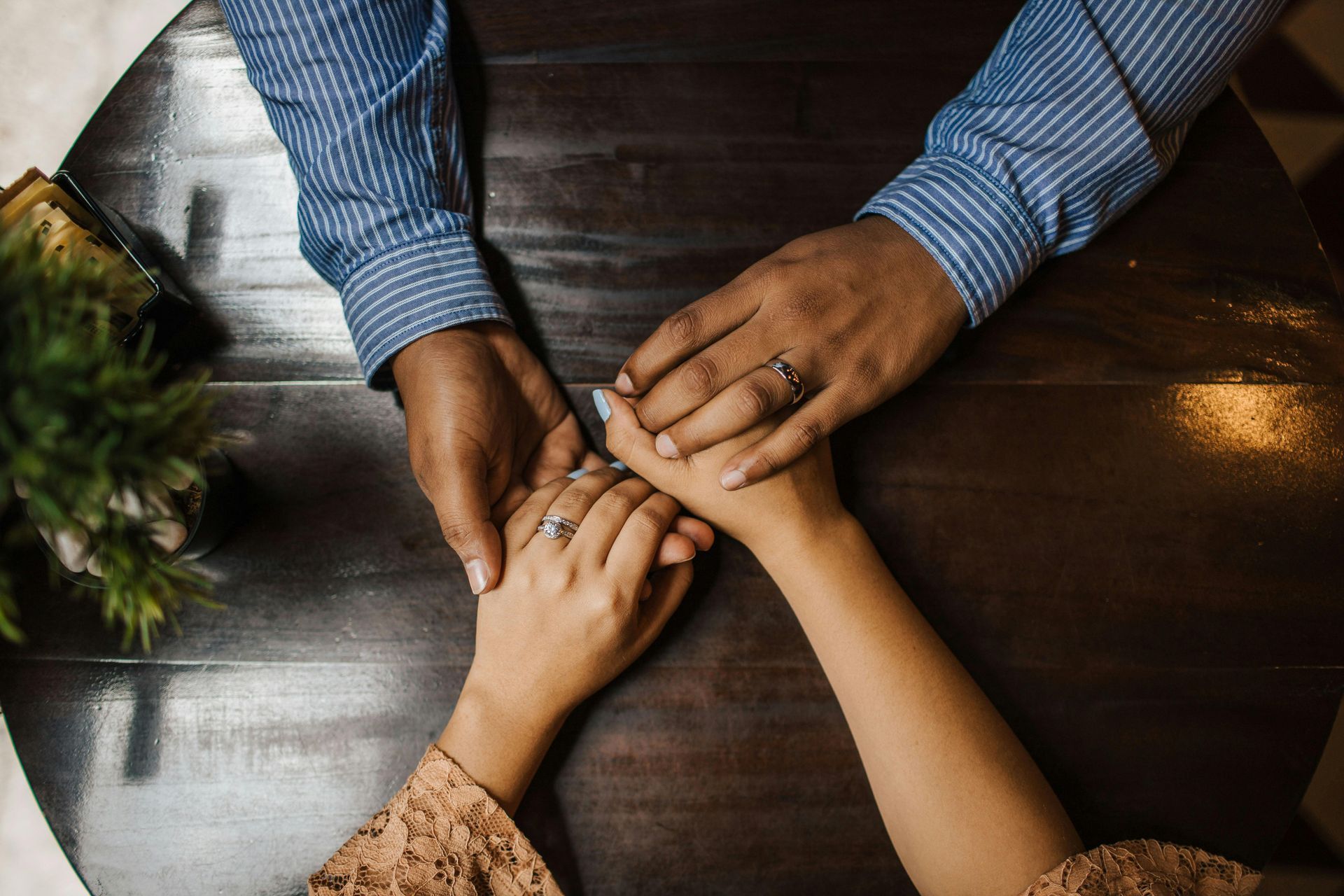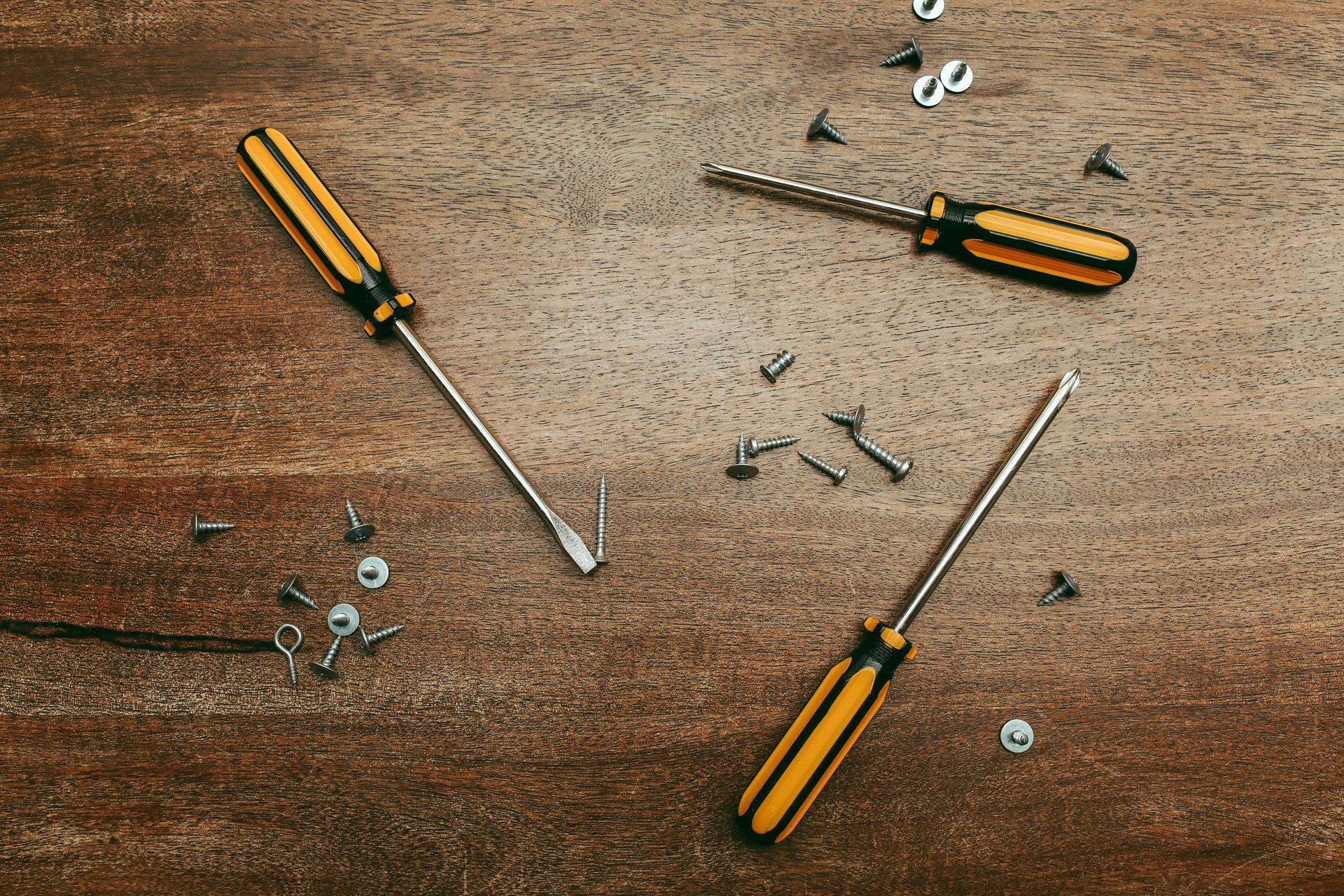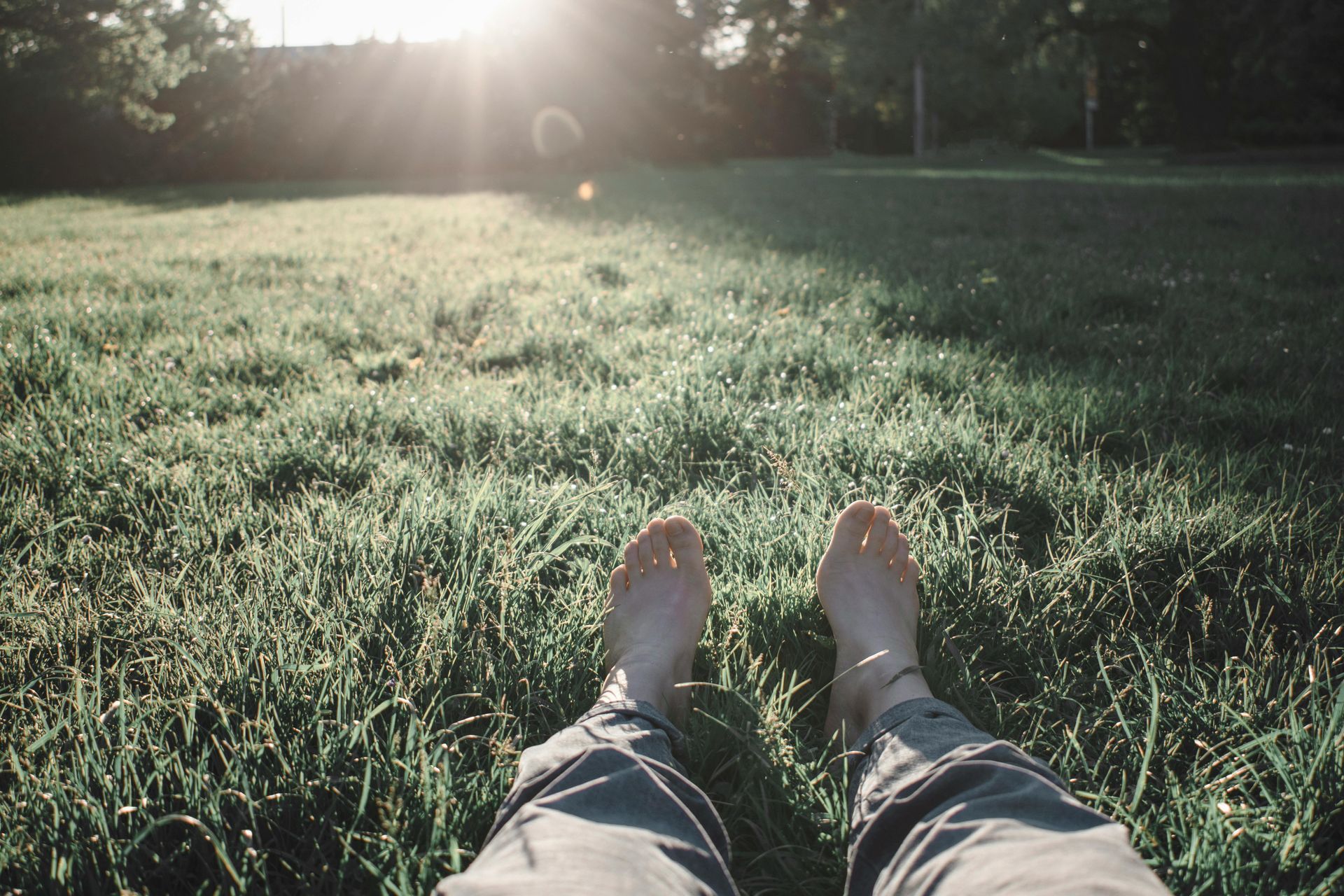Trauma Therapy Homework- Week 16
Week 16: (The Basics)
Bilateral Stimulation
Welcome back to another week of trauma therapy homework! This week, we’re diving into bilateral stimulation (BLS), a powerful tool used in trauma therapy, particularly in EMDR (Eye Movement Desensitization and Reprocessing). BLS is a rhythmic, back-and-forth movement that engages both the left and right sides of the body and the brain. This can be done through eye movements, tapping, auditory cues, or even physical movements. It can help calm the nervous system, especially when done at a slow, gentle pace. It can also be used to help with relaxation, emotion regulation, and feeling more present in the moment.

How BLS Impacts the Mind and Body
Research suggests that BLS engages both hemispheres of the brain due to activating both the left and right sides of the body. BLS can also mimic natural soothing rhythms we may have experienced in infancy—like a mother’s rocking. It may also help the body to connect to rhythmic ancient human traditions like drumming or dancing. These repetitive, back-and-forth movements have long been known to have a calming effect on the nervous system while bringing a sense of safety to the body.
BLS for Self-Guided Practice
If you are practicing bilateral stimulation outside of therapy, try to use a slow, calming rhythm rather than the rapid movements typically used in EMDR reprocessing. Fast tapping or eye movements are used when processing traumatic memories, and without the guidance of a therapist, they could bring up intense emotions that may feel overwhelming. Instead, opt for gentle, slow, grounding movements. These slower forms of BLS are more likely to help regulate the nervous system, reduce anxiety, and promote relaxation without triggering distressing memories. As always, do what feels right for you. Trauma-informed care is all about autonomy and choice. If you feel drawn to use faster BLS, or you feel it is supportive to your own body and experience, go for it!
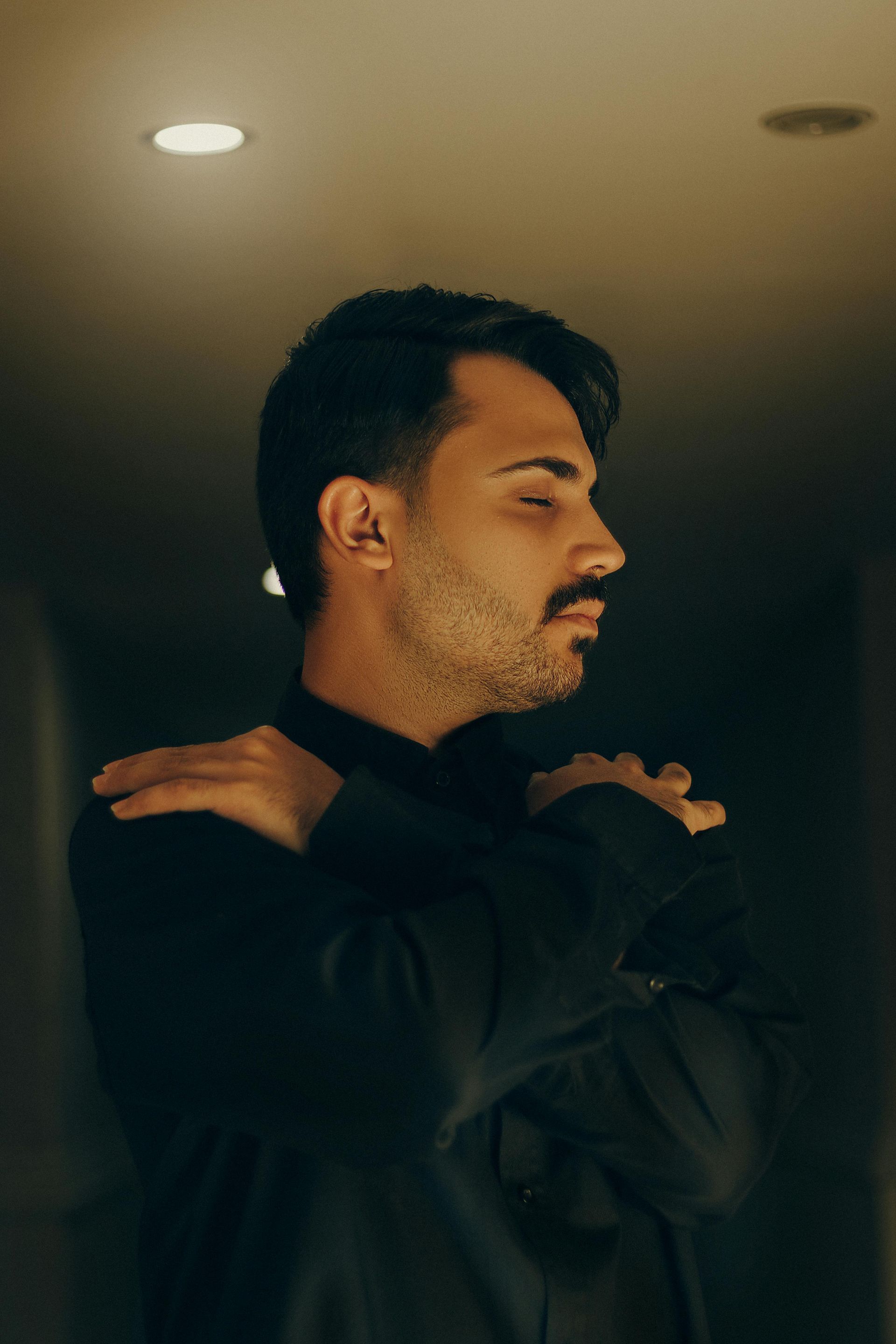
How Bilateral Stimulation is Used in EMDR
In EMDR therapy, bilateral stimulation is a key component of the reprocessing phase. It is used to help individuals work through distressing memories in a safe, structured way. It supports reducing the intense emotions that can come up when those memories are brought to mind. While EMDR typically uses fast, rapid eye movements, tapping, or auditory tones, it can be used at a slower, gentle pace when creating resources like a "calm place", a visualization of somewhere beautiful and soothing, where you picture alone time without others present. Resources can also be coping skills, noticing inner strengths, or focusing on positive memories. These are often created at the beginning of EMDR therapy, before reprocessing traumatic memories. However, they can always be created or added throughout the process if a resource is needed. You can incorporate this into your own life by pairing slow bilateral tapping with healing narratives (like affirmations or mantras), visualizations, or calming breathwork.
10 Ways to Use Bilateral Stimulation in Your Life
BLS isn’t just for EMDR therapy—it can be a helpful self-soothing tool for grounding, relaxation, and emotional regulation. Here are 10 simple ways to incorporate BLS into your daily routine:
- The Butterfly Hug – Cross your arms over your chest and gently tap your chest or shoulders one at a time. This is often used in EMDR as a self-soothing technique.
- Knee Tapping – While seated, place your right hand on your right knee and your left hand on your left knee. Tap your knees alternately with your hands in a steady, slow rhythm.
- Drumming or Percussion – Play a rhythmic beat on a drum, tabletop, surface, or knees alternating hands. You can do this to music!
- Watching a Ball Move Back and Forth – Some people find it helpful to watch YouTube videos with a ball moving side to side or track their own moving finger. Try searching "EMDR BLS Ball" and change the speed if needed in the settings icon under "playback speed".
- Bilateral Coloring or Drawing – Use both hands to draw or color simultaneously, activating both hemispheres of the brain. Many people like drawing circles with each hand. Change up the directions you are drawing to see what feels best. You may also enjoy drawing organic doodle shapes to go with what you are feeling.
- Marching in Place – The rhythmic movement of walking naturally engages both sides of the brain.
- Rocking Side to Side – Gently sway or shift your weight from one side to the other while standing or sitting.
- Listening to Binaural Beats – Some audio tracks play sounds that alternate between left and right ears, creating a similar effect to EMDR auditory BLS, just make sure you are listening with headphones! Try searching "bilateral stimulation music" or "EMDR BLS" or "binaural music".
- Tossing a Small Object Back and Forth Between Hands – Passing a ball or small object between your hands can create a soothing rhythmic motion.
- Swimming or Alternating Arm Movements – Engaging in freestyle swimming or even just mimicking the movement with your arms can create a bilateral effect.
- Bilateral Squeezing – Alternately squeeze a small object (like a stress ball) in each hand.
- Foot Tapping – Tap your left and right foot back and forth in a slow, steady rhythm. Try tapping with your toes and try tapping with your heels to see what feels better for you in the moment.
- Playing an Instrument – Piano playing or any instrument that uses both hands rhythmically can have a BLS effect.
- Finger Tapping Patterns – Tap your fingers in a left-right pattern (e.g., thumb to pinky on the left hand, then the right, thumb to pointer on the left, then right, thumb to middle etc.).
- Alternating Warm and Cool Compresses – Apply warm and cool compresses to your left and right arms or legs alternately.
- Bilateral Massage – Gently rub your left arm, shoulder, or neck with your right hand and then switch to alternate sides.
- Side-to-Side Stretching – While standing or sitting, reach each arm to the opposite side of your body in a slow, stretching motion.
- BLS with breath work - Try gently tapping from side to side, either on your knees or your chest, while focusing on your breath. As you focus on your breath, see if you can extend your exhale slightly longer than your inhale and slow it down.
- BLS with "positive cognitions" - In EMDR, we think about positive beliefs we want to bring into the healing process that often replace negative beliefs we learned from trauma. Think about a positive belief you want to connect to more. Say this over and over in your head while doing gentle BLS. Some examples of these healing narratives include "I am capable. I am learning to trust myself. I am lovable. I can learn from my mistakes. I am working on having more compassion for myself. I can set boundaries. I have choices. I can allow my emotions to be present."
- BLS with visualization - You can find amazing guided visualizations on YouTube or you can create your own. Try visualizing your own calm place, somewhere you are spending alone time that feels soothing and centering. Think about the details of this place using all 5 of your senses while you do BLS.
Final Thoughts
Bilateral stimulation is a powerful, accessible tool that can be used for grounding, emotional regulation, and even trauma processing. Whether you're engaging in gentle knee taps to calm your mind or using the Butterfly Hug to soothe yourself, incorporating BLS into your routine can be a simple yet effective way to bring balance to your nervous system.
If you’re currently in EMDR therapy, try practicing some of the resourcing techniques outside of sessions to build your sense of stability and self-regulation. If you’re not working with a therapist, explore slow, grounding BLS exercises as a way to stay present and connected to your body.
FREE Downloadable Handouts
Click this LINK for free access to downloadable PDFs from the Trauma Therapy Homework Series. You’ll be directed to my Google Drive folder, where you can explore all the handouts created so far. You can choose between a digital format for easy viewing on your device or a printable version if you prefer a hard copy.
Here is a preview of this week's handout! Click the link above to get your own free pdf copy.
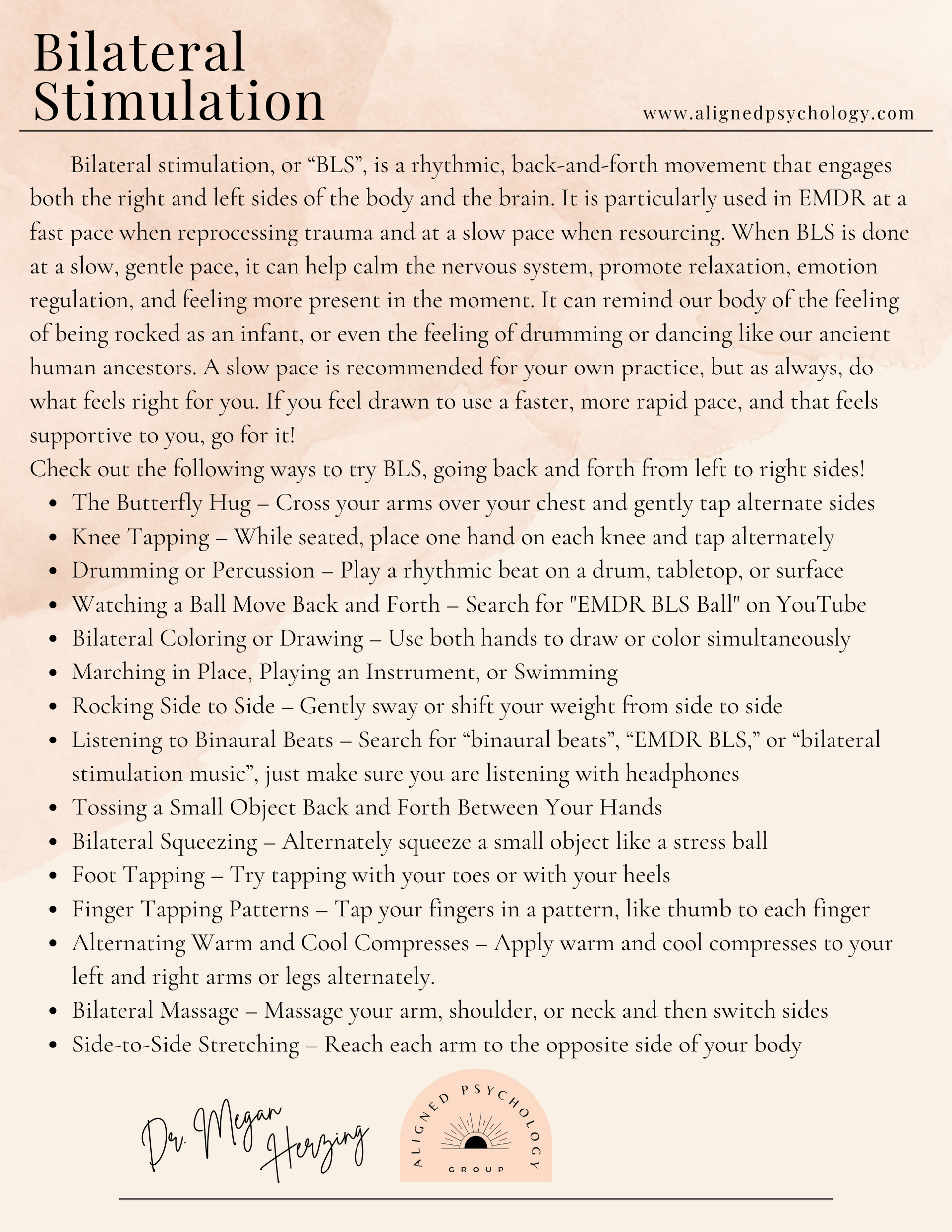
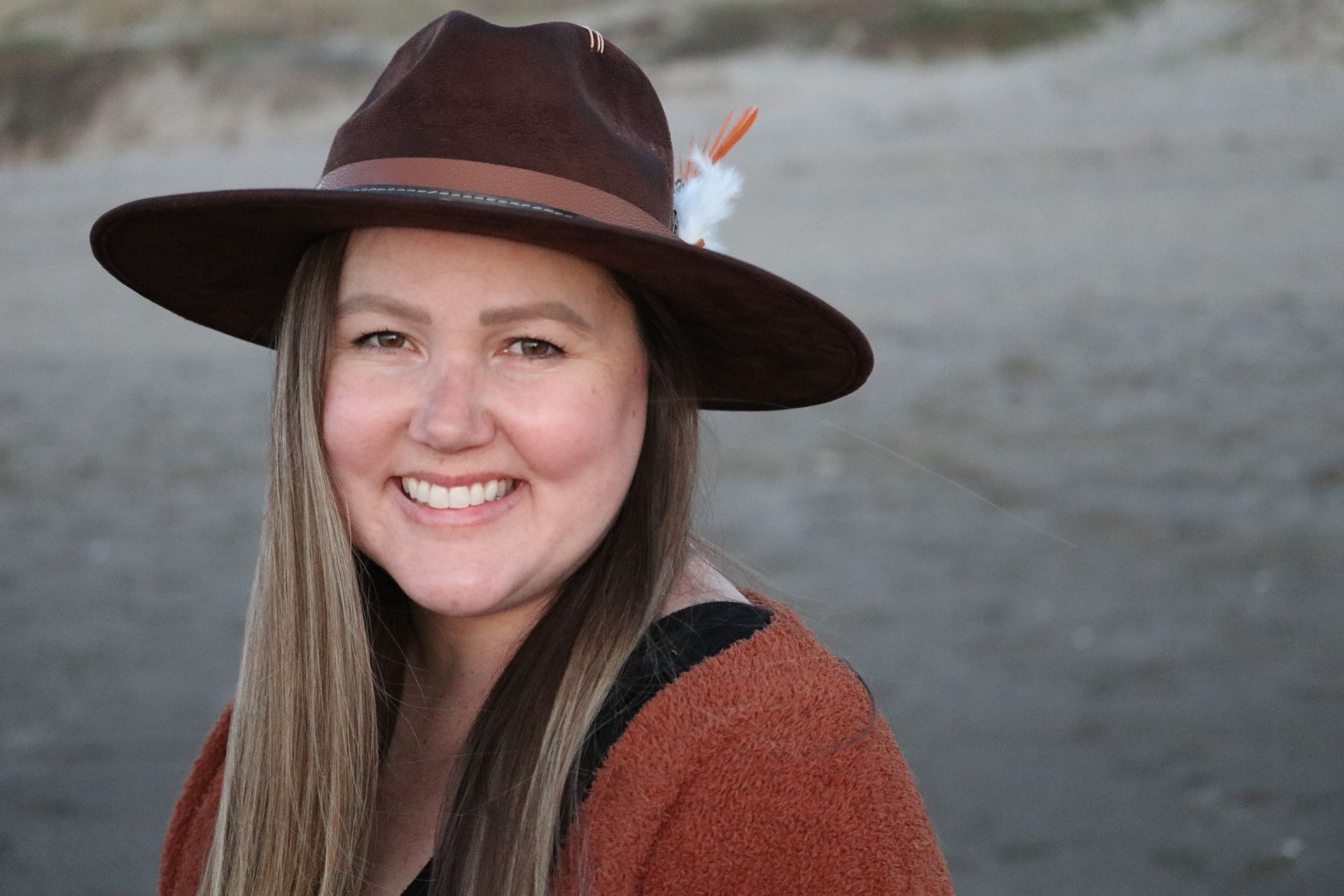
ABOUT THE AUTHOR
Dr. Megan
Megan Herzing PsyD, Licensed Professional Clinical Counselor, specializes in trauma therapy and creating a safe, supportive space for healing. She integrates evidence-based modalities, including EMDR, Internal Family Systems (IFS), somatic therapy, and Emotionally Focused Therapy (EFT), to address the mind-body connection and empower clients on their journey to wellness. With extensive experience treating complex PTSD, anxiety, attachment injuries, and dissociation, she believes in the power of self-compassion and authentic connection to facilitate lasting change. Drawing from her own healing journey, she brings empathy and lived experience to her work, honoring each client’s unique path toward growth and resilience.
Thank you for being part of a community of humans that deeply cares about healing.
We are honored that you stopped by and hope our resources will continue to bring value to your life.
We are accepting new clients in California, and referrals are always appreciated.
